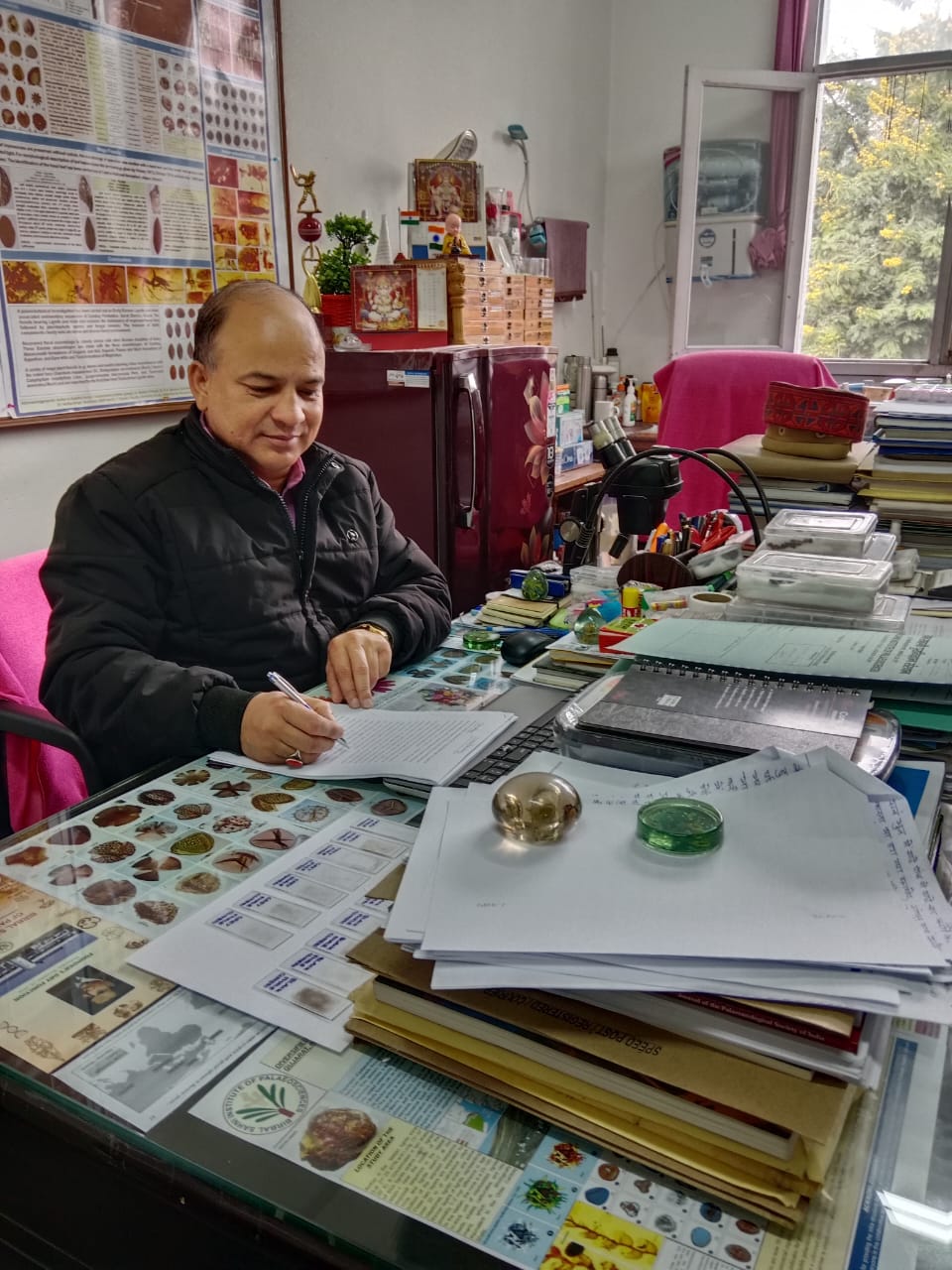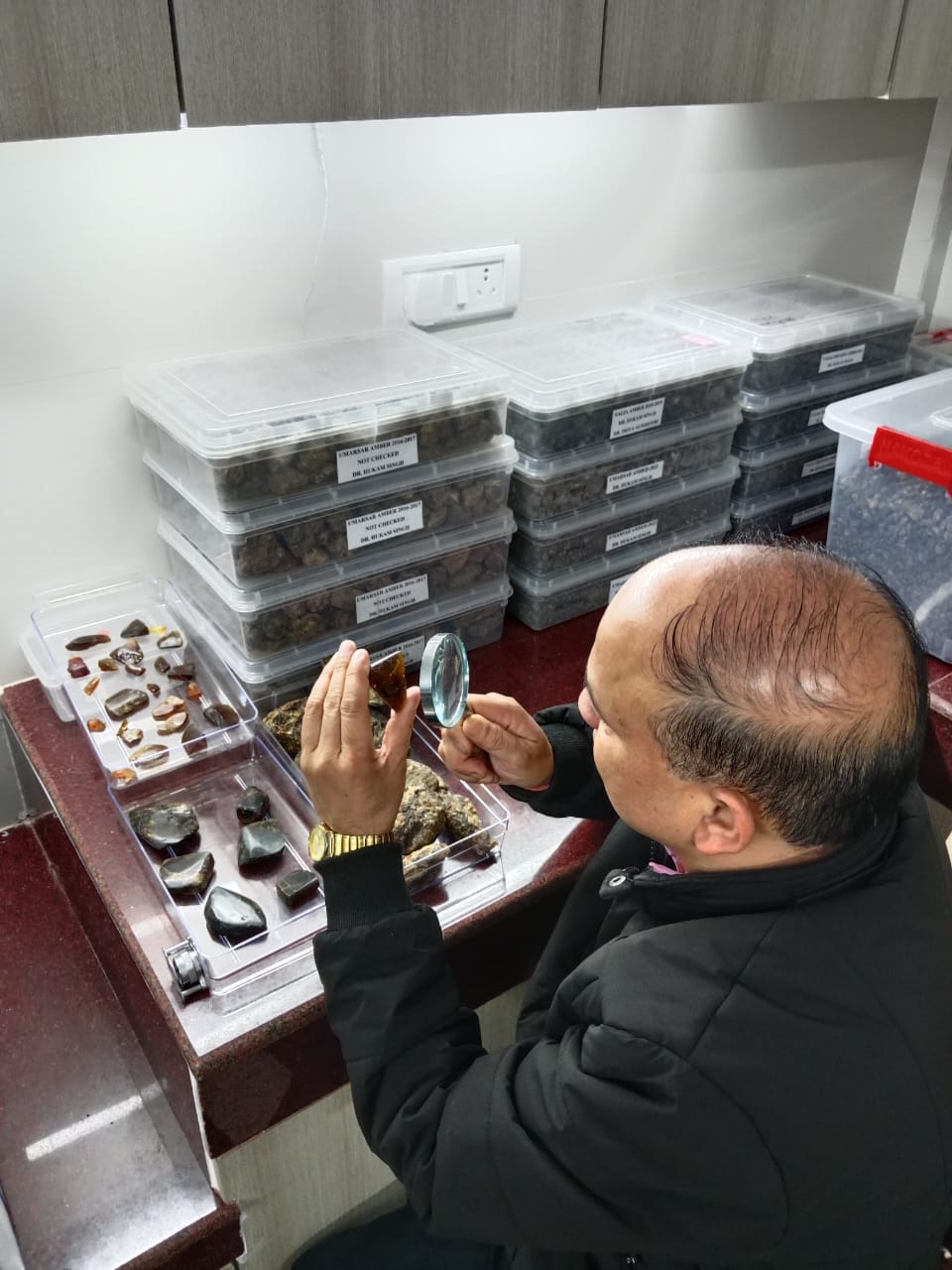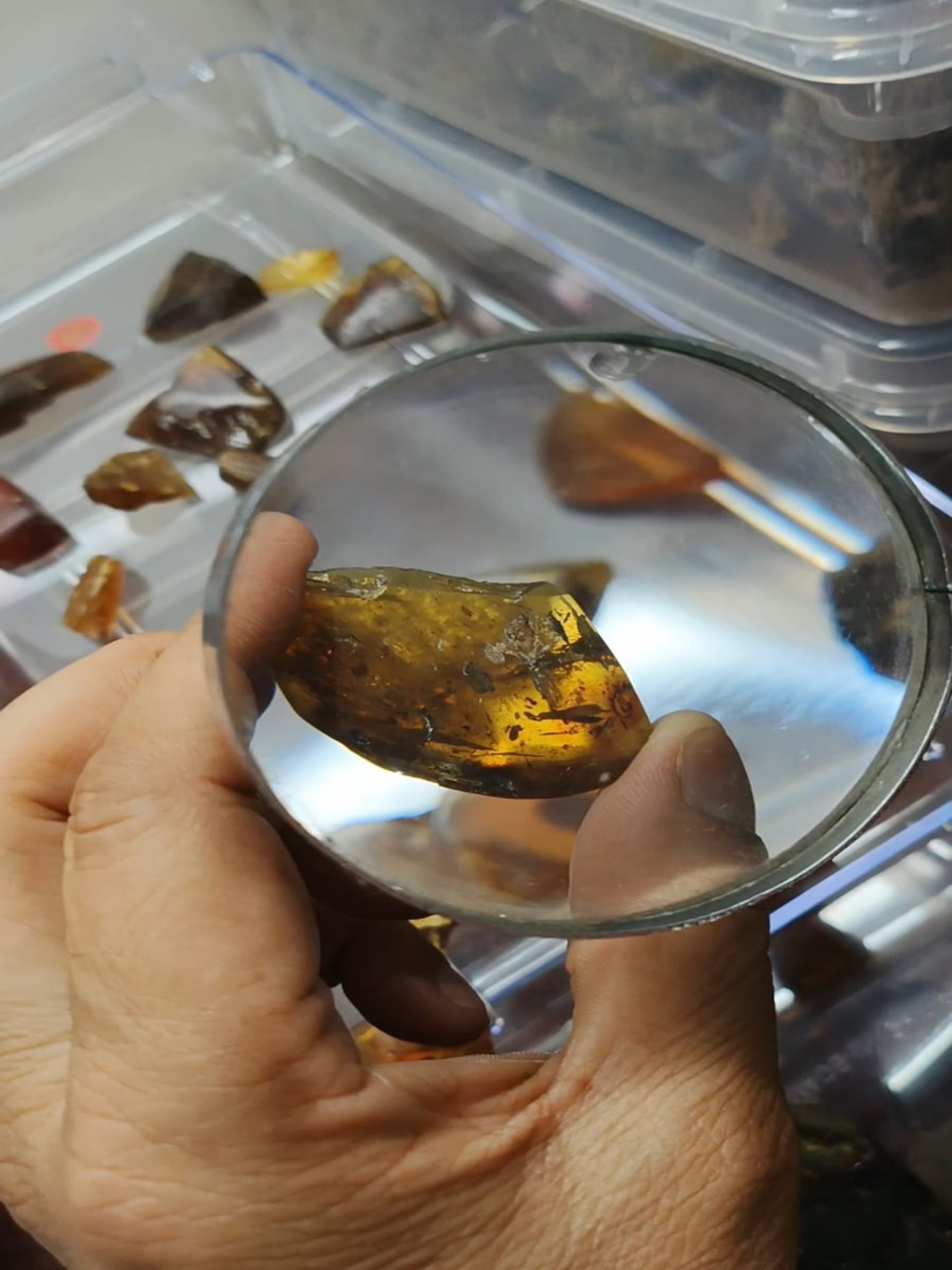एम्बर विश्लेषण और पैलियोएंटोमोलॉजी प्रयोगशाला
At present, amber nodules have been found in
India in the Cretaceous (Rudra et al., 2014), Palaeocene/Eocene (Rust et
al. 2010) and in the Miocene at Warkalli (Dutta et al., 2014) and in the North-East (Tiwari
et al., 2015) and there is
considerable potential of their being found in other geological levels and localities.
Typically, amber analysis
identifies the botanical producer, gives information of the structure of the polymer which
in turn allows it to be
classified in known categories. It is of interest to know that Indian Eocene amber from the
Gujarat Basins is classified
as Dammar Resin II, commonly known in Southeast Asia
Described for the first time in 2005 (Alimohammadian et al. 2005), amber nodules discovered
from the Gujarat Lignites
Mines of the Cambay and Kutch Basins, are unique in terms of the information they provide
for Indian geosciences. They
occur at a time when India was drifting northwards towards Asia and when global temperatures
were influenced by a series
of thermal events, raising global mean annual temperatures by 50 to 80 C from current values
of 150C. They record a
unique biota that was diversifying in the greenhouse earth at the time, these forms include
a variety of plants,
insects, arthropods and ostracodes preserved in three dimensional excellence. Biochemical
analysis carried out by IIT
Mumbai suggests that these ambers are polymerized tree resins that exuded from
Dipterocarpaceae (Sal trees) (Dutta et
al., 2009, 2011, 2014, Dutta and Mallick, 2017). The Indian amber deposits have commanded
global attention since they
are one of the few that occur during the Lower Eocene in an equatorial climatic zone. In
addition, high-resolution
techniques have been developed whereby it is possible to extract the fossil inclusions and
study them by sophisticated
instrumentations, such as scanning electron microscopy (Rust et al., 2010), confocal laser
scanning microscopy (Cai et
al., 2018, Fu et al., 2021), synchroton x-ray imaging (Stebner et al., 2016) and
biochemistry by mass spectroscopy
methods (Beimforde et al. 2011).





Fossil arthropods and other inclusions add another significant dimension to terrestrial
biotas. Amber inclusions include
a wide range of organisms: fungi, testate amoeba, diatoms, algae, bryophytes comprising
microbiota, stems, leaves,
flowers, pollen (flora), insects, spiders and their eggs and webs, ostracodes, and a rare
bird feather. Amber studies
thus afford a glimpse of the past biodiversity in one of the first evolving tropical
evergreen forests in the Lower
Eocene and help to recreate long lost ecosystems in a greenhouse earth and paleoenvironments
that interface with open
oceans, lagoons and delta deposits. Several of the Indian forms represent the earliest
record at the familial level and
serve to trace dispersal corridors and migrations and help in the reconstruction of
palaeobiogeography.
In the last 15 years or so, over 100 very high quality papers have been published on various
aspects of Indian amber,
many in prestigious journals such as PNAS (Rust et al., 2010), Scientific Reports (Stebner
et al., 2016), American
Journal of Botany (Singh et al., 2021), International Journal of Coal Geology (Singh et al.,
2021) and several others
(Grimaldi and Singh, 2012, Stebner et al., 2017, Engel et al., 2011, Ortega Blanco et al.,
2013, Singh 2020).
To further encourage this field of Science, an amber analysis and palaeoentomology
laboratory was inaugurated on 14th
November, 2023 by Professor Ashok Sahni, Scientist Emeritus, Panjab University, Chandigarh.
Prof. Sahni is a pioneer in
the field of Indian Palaeontology who discovered the first Indian dinosaur fossil Rajasaurus
along the Narmada River. It
was his vision that paved way for such kind of new research to be established in India and
speaks a lot about the hidden
fossil treasures in the Indian Lignites of Gujarat. Institute’s director, Professor Mahesh
G. Thakkar, has also extended
his full support in the establishment of the new amber laboratory and encouraging new fields
of scientific research and
innovation. The inauguration was done in the presence of Professor Mahesh Thakkar, Prof.
Ashok Sahni, Dr, Hukam Singh,
other scientists and staff of the institute on Thursday.
Amber Group, BSIP, Lucknow
Dr. Hukam Singh, Scientist- E
Ms. Priya Agnihotri, Ex-BSRS (2019-2022)
